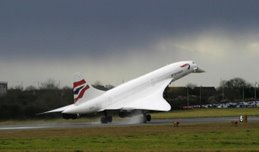This is my post number Two Hundred on this blog, and the last one dedicated to Crete 2007. It is mostly directed to the less known Southern side of the Island. Next time (there will be a next time, hopefully), I'll finally get to the beaches at the extreme West (Gramvousa Islet, Balos Lagoon and Elafonisi) and at the extreme East (Vai Palm and Kato Zakros). Meanwhile enjoy!

"LIBYAN SEA - This blue portion of the Mediterranean Sea, located north of Libya and south of Crete is the Libyan Sea"


"PLAKIAS is a small village spread alongside a single street, which runs by the beach. It is located on a beautiful bay, 40 km south from Rethymnon, with some lovely beaches around and nice restaurants"

"PREVELI MONASTERY - The Holy Stavropegiac and Patriarchal Preveli Monastery of Saint John the Theologian (Evangelist), known as the Monastery of Preveli, is located by the Libyan Sea at the Prefecture of Rethymno. It consists of two main building complexes, the Lower Monastery of Saint John the Baptist and the Rear Monastery of Saint John the Theologian"

"HISTORY - The Monastery has an important history of participation in the centuries long fight of the Cretan people for freedom. In May 1941, after the Battle of Crete, Monks of the Monastery provided shelter for a large number of English, New Zealand and Australian soldiers. One of them was the Australian Geoff Edwards, who was evacuated from Crete in an August night in 1941. In 1978, he started the construction of the St. John the Theologian chapel in Preveli, Western Australia. In 1984, he established a fund to help Cretans in the province of Rethymno. In 1989, Edwards published his book «The Road to Preveli», and in 1991 he gave this fountain to the Monastery"

"THE PAXIMADIA ISLANDS are two small uninhabited islands, south of Rethymno prefecture and visible from the Preveli Monastery"



"PREVELI BEACH - Finikas (Phoenix) as it is officially known - is located some 40km far from Rethymno, and is one of the most beautiful beaches in Crete. There are two ways to get there: the comfortable one (by boat from Plakias) and the hard one (driving from Preveli Monastery to the parking lot and then hiking down the path). Descending isn't that tough, and the views are awesome..."


"THE RIVER KOURTALIOTIS has its mouth on this exotic sandy beach, with a forest of palm trees. The river has water even in summer, and forms a small lagoon just before getting into the sea, which makes possible to bathe both in salted and fresh water! Up the river is fascinating; sometimes it makes you think that you are in an oasis"




"GETTING BACK - The only problem is that if you walked down, then you have to climb up... Better do it late in the afternoon to avoid the heat, but anyhow, it's an experience!"


"SPILI - Situated some 30km south of Rethymno, and approximately in the middle of the island, Spili is a top destination for those looking for natural Crete"

"VENETIAN FOUNTAIN - In the centre of the village there is a fountain with a row of more than twenty stone lions' heads splashing cool water"






























































